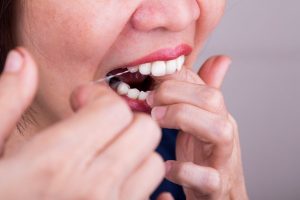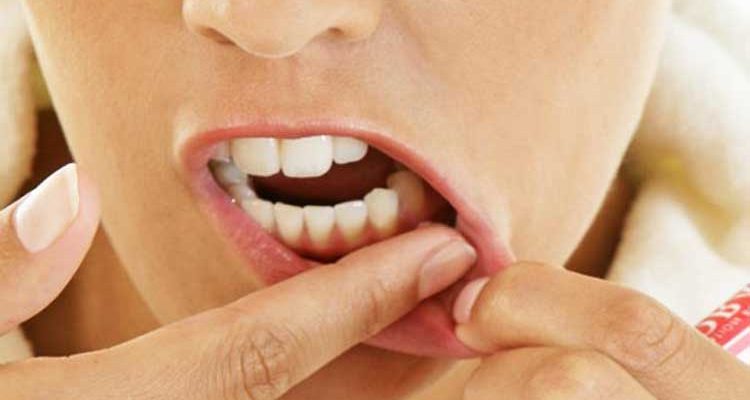We often hear the phrase “Everything must be done on time!” And this applies to visiting the dentist in the first place.
A sick tooth cannot be cured by rinsing with baking soda, using analginum and a wonderful paste for self-sealing teeth. Various dental drops, heating pads and so on are also ineffective and harmful. Sooner or later, you will “swell”. Believe me, it’s better not to bring it up to this.
Purulent inflammatory diseases of the maxillofacial region are most often complications of caries. Depending on the severity, they are arranged in the following order: periostitis, abscess, phlegmon.
Flux
The term “flux” is of German origin, it means “flow, flow”. Now you will not hear it from any professional dentist: the flux has been renamed once and for all to odontogenic periostitis. This is the most common “reward” of patient patients who have avoided the dentist for a long time.
Most often, the culprit of periostitis is a tooth affected by caries. However, it is possible that the whole point is in mechanical injury (bruise) or inflammation of the gum pocket – the space between the tooth and the gum. In any case, an infection is involved in the occurrence of the flux, which provokes the development of a purulent process.
As mentioned above, most often the cause of odontogenic periostitis lies in a diseased tooth. From the top of the tooth, pus makes a channel for itself in the bone tissue, trying to escape outward, and breaks through the bone, stopping under the periosteum of the upper or lower jaw (in Latin – periostum). It is from here that the name periostitis came from.
They say about periodontitis when:
toothache is permanent,
pain intensifies when pressing on the tooth, chewing, or when trying to knock on the tooth with any object (for example, a fork),
the tooth is badly destroyed,
earlier this tooth was treated for pulpitis.
If the symptoms listed above are accompanied by edema of the tissues surrounding the tooth, swelling of the cheek from the side of the diseased tooth, this is already periostitis. Particularly severe cases of periostitis can be accompanied by an increase in body temperature.
Treatment
If you have such a nuisance, urgently run to the dentist. The treatment of periostitis looks like this: under anesthesia, an incision is made in the mouth, releasing pus. A rubber strip is inserted into the incision – drainage. After that, the patient is prescribed antibacterial and anti-inflammatory drugs.
Abscess
An abscess is a limited collection of pus in tissues. At its core, periostitis is also an abscess, but limited to the periosteum. Abscesses are also opened and drained, but the drainage (rubber strip) is kept longer.
Phlegmon
Phlegmon is a diffuse purulent inflammation. Pus is not limited by anything and can penetrate into different parts of the face between the muscles, go to the neck and even go down into the mediastinum – the part of the chest cavity in which the heart, trachea and esophagus are located.
This disease is very dangerous and can be fatal. Agree, it’s stupid to die because of a tooth not healed during.
How not to harm?
In no case do warming compresses, this procedure promotes the spread of the process.
Don’t give yourself any bandages. The “illnesses” with a cheek tied with a scarf, which were repeatedly reproduced in various drawings and cartoons, is a very bad example. The bandage is not a remedy.
Do not drink antibiotics without first talking to your doctor. Antibiotics are drunk according to a certain scheme, otherwise they are completely ineffective. Microbes adapt to the drug, and the antibiotic becomes useless in the future, along the way, you harm the liver and kidneys.
Do not take pain relievers less than 3 hours before your doctor’s appointment. Otherwise, you will complicate the diagnosis.
If you have an incision, do not drink aspirin. Aspirin can cause bleeding. Moreover, as an anesthetic in this case, it is absolutely unsuitable.
If, despite the incision, you do not feel better within 12 hours, see your doctor again.
Do not prescribe or stop medication as you please.
You should not listen to the opinion of your friends, even if they (according to their stories) had the same problem.
After treatment
Do not expect instantaneous disappearance of edema and infiltration, the edema may even increase slightly. However, on the 3rd day, you should sharply go on the mend. An infiltrate – an area of soft tissue compaction in the affected area – can persist for quite a long time.
Within a few hours after opening the abscess https://en.wikipedia.org/wiki/Abscess or periostitis, the bursting pain in the area of the focus should subside, and the temperature should begin to decrease. There may be slight discomfort along the incision line, but there should be no severe pain.
A rubber strip is usually inserted into the incision – drainage, which will not allow the wound to close prematurely. Do not pull, push or try to fix it. If the drainage has fallen out, see a doctor as soon as possible.
If something does not go as it says here, check with your doctor.
